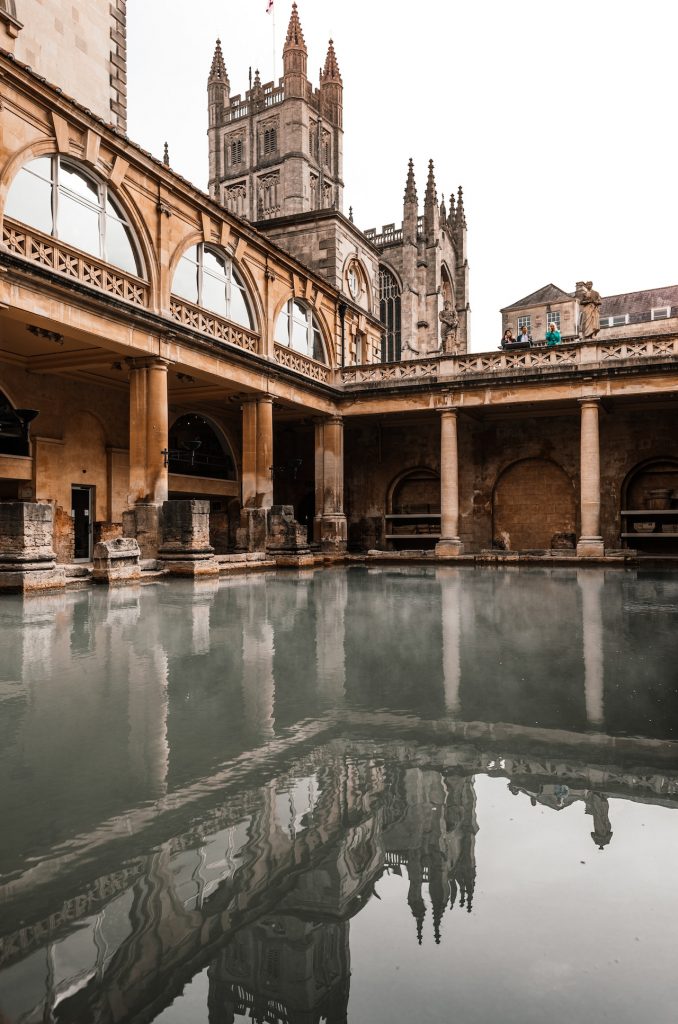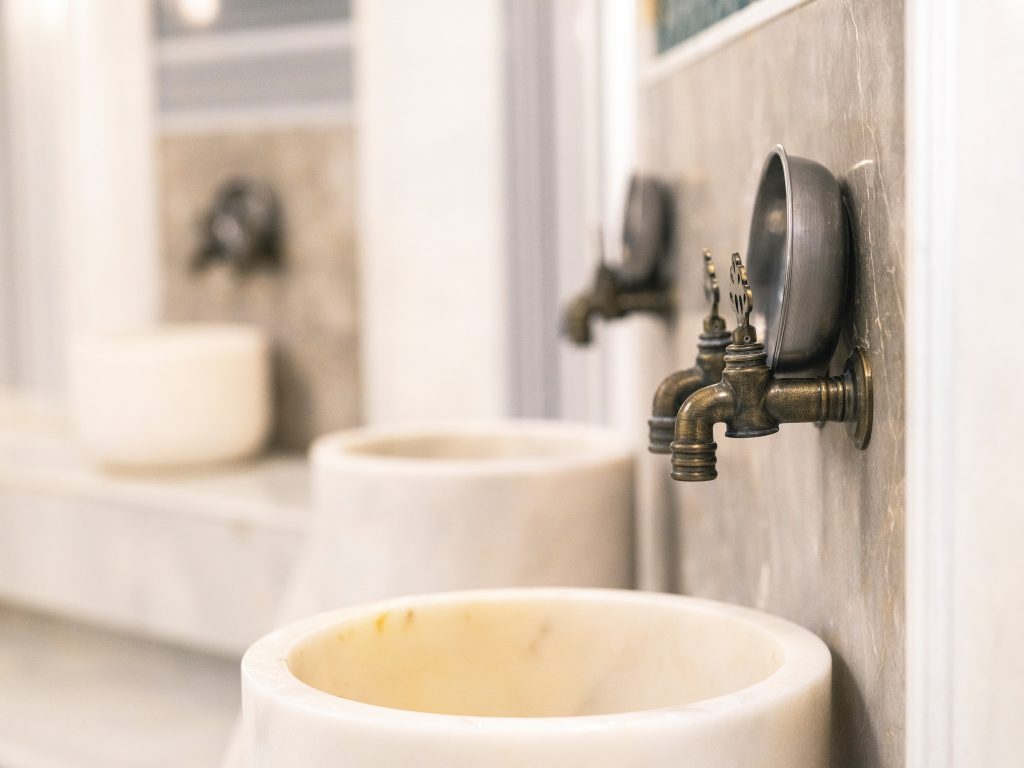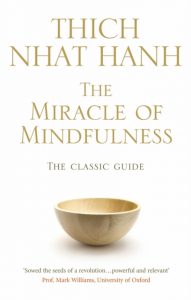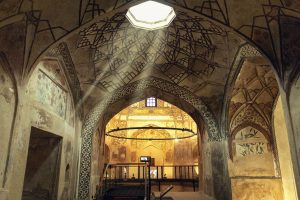For thousands of years, hammams have played an important role in Middle Eastern culture as a place for bathing, socializing, and relaxation. Originally used for practical purposes, hammams have evolved into a luxurious spa experience that is enjoyed by people all over the world. In this blog post, we will take a closer look at the evolution of hammams, tracing their history from their early beginnings to their current popularity as a spa experience. We will explore how hammams have changed over time, adapting to the changing needs of society while maintaining their cultural significance. Whether you are a seasoned hammam-goer or just learning about this ancient tradition, this post will provide an in-depth look at the fascinating history and evolution of hammams. So join us as we dive into the world of hammams, and discover how these iconic spa destinations have shaped and continue to shape our spa culture.

The history of the hammam and Middle Eastern bathing culture.
Hammams have a long and rich history that dates back thousands of years. The exact origin of hammams is not known, but it is believed that they were first developed in the Middle East, where the practice of communal bathing and washing was common. Hammams were initially used for practical purposes, as a place for people to wash and cleanse themselves.
We can find more historical information when we look into bathhouses, also known as public or communal bathing facilities. It has a rich history that dates back to ancient times. The first recorded bathhouses were built in the Indus Valley Civilization in modern-day Pakistan and India over 5,000 years ago. These early bathhouses were used for both hygiene and religious purposes, with people using them to cleanse their bodies before worshiping the gods.
The ancient Greeks and Romans also built bathhouses, which became popular gathering places for socializing and relaxing. The Greeks built their bathhouses, called gymnasia, near their athletic training grounds, while the Romans built large and luxurious public bathhouses, known as thermae, that were often situated near major public buildings.
During the Middle Ages in Europe, public bathhouses declined in popularity, partly due to the spread of disease and the belief that bathing could lead to illness. However, in the Islamic world, public bathhouses remained popular and were known as hammams. These bathhouses featured a unique design that included a steam room and a series of warm and cool rooms, and they were used for both hygiene and socializing.

In the 19th and 20th centuries, bathhouses experienced a resurgence in popularity, particularly in urban areas. In the United States, bathhouses were commonly built in major cities and were often used as public health facilities to help combat the spread of disease.
Over time, hammams evolved into more than just a place for hygiene, becoming an important social and cultural institution in many Middle Eastern communities. They were places where people could gather to socialize, relax, and enjoy communal rituals such as steaming and massage.
Hammams continued to thrive during the Islamic Golden Age, with many grand and luxurious bathhouses being built throughout the Middle East and beyond. These bathhouses featured elaborate tilework, domed ceilings, and intricate architecture, reflecting the importance placed on hammams in Middle Eastern culture.
In the modern era, hammams have remained popular in many parts of the world and have evolved into a spa experience that offers a wide range of services, such as massage, exfoliation, and skin treatments. Many hammams now incorporate modern amenities such as saunas and jacuzzis, while still retaining their traditional design and cultural significance.
Today, hammams are enjoyed by people of all backgrounds, providing a relaxing and rejuvenating spa experience that is steeped in centuries of cultural history and tradition.
Hammams in literature
Hammams have been a popular setting in literature, especially in Middle Eastern literature. They have been depicted as places where people come together to socialize, relax, discuss important matters but also for sensual pleasure.
One of the most famous literary references to hammams is in “One Thousand and One Nights,” also known as the Arabian Nights. In this collection of tales, hammams are often mentioned as important gathering places where characters interact, discuss their adventures, and engage in other social activities.
“The Tale of the Ensorcelled Prince,” the hammam is depicted as a place of seduction and sensual delight, where the protagonist is able to experience pleasure and romance.
Another literary work that features a hammam is “The Bathhouse” by Farnoosh Moshiri, which tells the story of a group of women who are imprisoned in Iran and find solace in a hammam. The hammam becomes a sanctuary where the women can escape from their harsh reality and support each other.
Hammams have also been depicted in Western literature, such as in the novel “The Three Musketeers” by Alexandre Dumas. In this novel, the main characters visit a hammam in Algiers, where they engage in sword fighting and other adventures.
Overall, hammams have been a popular setting in literature and have been portrayed in various ways, reflecting their cultural and historical significance in Middle Eastern society.
Exploring the Varieties of Hammam: How They Differ and Which is Right for You ?
- Turkish Hammam: The Turkish hammam, also known as the Turkish bath, is perhaps the most well-known type of hammam. It features a series of warm and hot rooms, as well as a steam room, and is traditionally used for cleansing, relaxation, and socializing.
- Moroccan Hammam: The Moroccan hammam, also known as the “hammam Maghrebi,” is another popular type of hammam. It typically features a steam room, a hot room, and a cold room, as well as traditional Moroccan design elements such as colorful mosaics and geometric patterns.
- Japanese Onsen: The Japanese onsen is a type of public bath that is traditionally fed by natural hot springs. It typically features both indoor and outdoor baths, and is often used for relaxation and healing.
- Roman Thermae: The Roman thermae were the public bathhouses of ancient Rome, and were often large and luxurious facilities. They typically featured hot and cold rooms, as well as pools for swimming and socializing.
- Islamic Hammam: The Islamic hammam, or “hammam Maghrebi,” is similar to the Moroccan hammam, and is typically found in North Africa and the Middle East. It features a steam room, as well as a series of warm and hot rooms, and is traditionally used for cleansing, relaxation, and socializing.

How to recognise a good hammam?
- Positive Reviews: Firstly, a good hammam should have positive reviews from customers who have experienced its services. Read our reviews on our hotels with spa europe website or ask for recommendations from friends to get an idea of the quality of the hammam you are considering.
- Hammam authenticity is an important aspect of the overall experience. An authentic hammam should reflect the cultural heritage and traditional design of the region where it originates from. For example, Turkish hammams will differ from Moroccan hammams in design and decor. The following are some elements that are commonly found in an authentic hammam design:
- a. Architectural Elements: The overall structure of an authentic hammam should reflect the traditional architecture of the region. This may include elements such as archways, domed ceilings, and ornate tile work.
- b. Steam Room: The steam room, or “hararet,” is a key feature of a hammam. It should be designed to create a humid environment that promotes relaxation and sweating. The walls and ceiling should be made of heat-resistant materials, such as marble, and feature ventilation to maintain comfortable temperatures.
- c. Bathing Areas: The traditional hammam features a series of bathing areas that range in temperature, from hot to cold. These may include a hot room, a tepid room, and a cool room. Each area should have an appropriate temperature and be designed to promote relaxation.
- d. Decor: Traditional hammams often feature ornate tile work, intricate mosaics, and colorful patterns. These design elements should be present throughout the hammam, creating a vibrant and visually appealing atmosphere.
- e. Accessories: Hammams may also feature traditional accessories, such as copper buckets for water and soap, pestemal towels, and wooden bath shoes.
- 3. Skilled Staff: A good hammam should have experienced and skilled staff who can provide high-quality treatments, such as massages, scrubs, and other spa services. They should be knowledgeable about the hammam experience and able to guide you through the process.4. Comfortable Facilities: A good hammam should have comfortable facilities, such as clean towels, a well-maintained steam room, and a comfortable resting area. The temperature should be warm but not too hot, and the lighting and decor should be soothing.

What are the benefits of visiting Hammam?
Relaxation and Stress relief
Hammam is a traditional form of bathing that has been used for centuries to promote relaxation and well-being. The warm and steamy atmosphere of a hammam can be incredibly comforting, especially during cooler months or when feeling chilly. The heat and humidity of the hammam can help to reduce anxiety levels, as Dr. Rachel Nazarian, a dermatologist, explains, “It relaxes the muscles and helps release endorphins, which are feel-good hormones that can reduce pain and stress.”
In addition to its physical benefits, the ambiance of a hammam can also help to promote feelings of calm and relaxation. Unlike some other forms of relaxation, like massages or facials, hammam is generally a quieter experience. This can be helpful for people who find it difficult to relax in noisy or crowded environments. Many hammam experiences also incorporate the use of essential oils or other aromatic substances to enhance the relaxation experience.
Hammam has been shown to have many benefits beyond just relaxation and stress relief. It can also improve circulation, detoxify the body, and promote better skin health. As Dr. Nazarian explains, “The steam in the hammam helps open up pores and flush out toxins, which can help to improve the skin’s appearance.” Additionally, hammam can help to boost the immune system, as the warm and humid environment can help to reduce inflammation and promote better overall health.
Cleansing and Detoxification
Hammam can aid in the cleansing and detoxification of the body. The warm and humid environment can help to open up pores and flush out toxins from the skin. The heat also encourages sweating, which can help to eliminate toxins from the body. “The steam helps the body to release any toxins that have built up in the body,” explains Dr. Samantha Bunting, a dermatologist. Additionally, some hammam experiences may include the use of special scrubs or exfoliating treatments that can help to remove dead skin cells and promote better skin health. These treatments can help to rejuvenate the skin, leaving it looking and feeling refreshed and clean. Overall, hammam can be a great way to support the body’s natural detoxification processes and improve overall skin health.
Respiratory Health
The warm and humid atmosphere can help to alleviate respiratory symptoms like congestion and coughing. “The steam from the hammam can help to open up the airways and improve breathing,” explains Dr. Bunting. Inhaling warm steam can help to soothe irritated nasal passages and alleviate congestion. This can be particularly helpful for people who suffer from respiratory conditions like asthma, bronchitis, or allergies. Additionally, some hammam experiences may incorporate the use of essential oils or other aromatic substances that can further promote respiratory health. Certain oils like eucalyptus or peppermint have natural decongestant properties that can help to alleviate symptoms of respiratory issues.
Pain Relief
The warm room and humid environment can help to soothe sore and achy muscles, joints, and other areas of the body. “The heat can help to improve circulation and blood flow to the affected areas, which can help to alleviate pain and stiffness,” explains Dr. Bunting. Additionally, some hammam experiences may incorporate massage or other forms of bodywork that can further promote pain relief. Massage can help to release tension in the muscles and reduce pain and discomfort. Some people also find that the relaxation and stress relief benefits of hammam can help to alleviate pain caused by stress or tension.
To sum up Hammam offers a multitude of benefits for physical and mental well-being. It can help to promote relaxation, reduce stress, and improve sleep. Additionally, hammam can aid in detoxification, improve respiratory health, and relieve pain. With its long history and tradition, hammam is a natural and effective way to support overall health and wellness. Don’t miss out on this unique and rejuvenating experience – try hammam for yourself and feel the difference it can make for your mind and body. Relax, detox, ease pain, improve health. Experience hammam, feel renewed!







